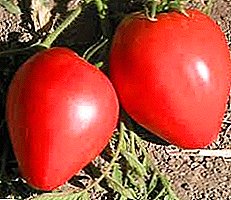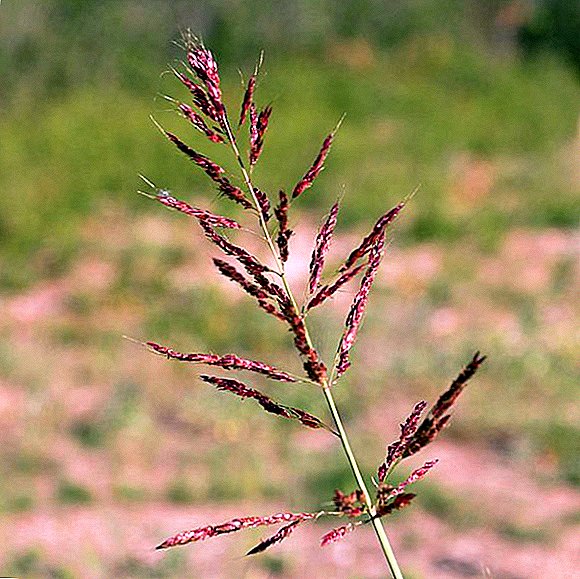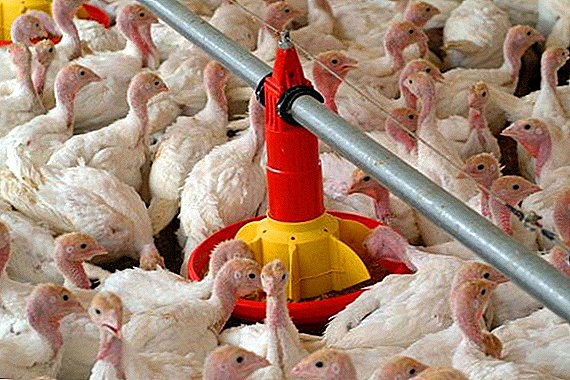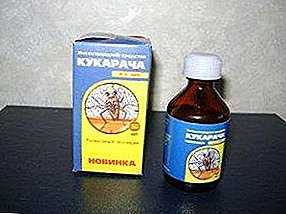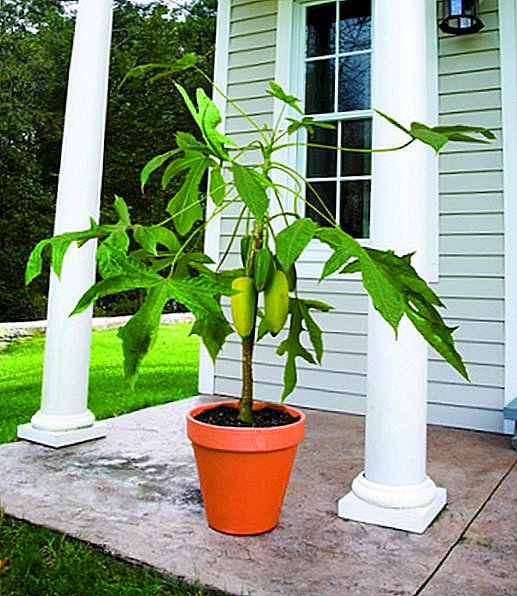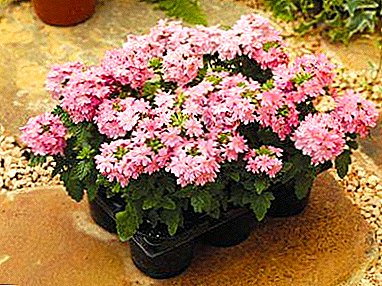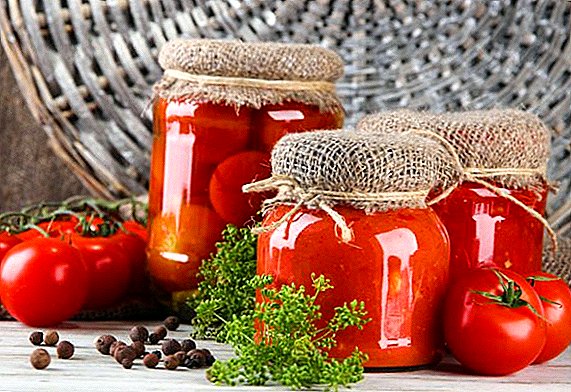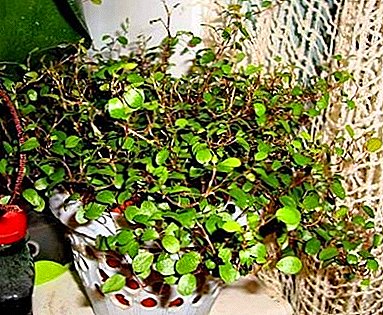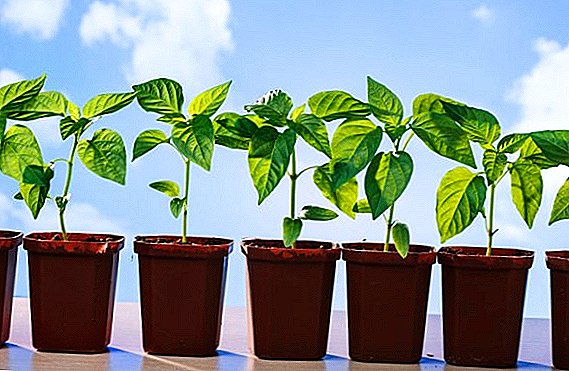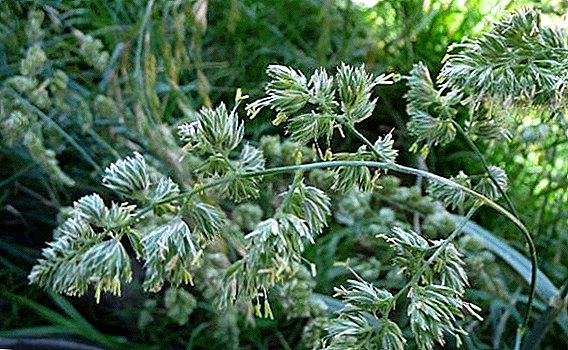 The hedgehog team is a universal plant, which is used for agricultural and landscape design purposes. Grass is common in North America, Eurasia, North Africa. It grows on the banks of rivers, glades, vacant lots, roadsides and in other areas. The grass is a persistent, picky, well adaptable plant. Widely represented on the European territory of Russia and the Caucasus.
The hedgehog team is a universal plant, which is used for agricultural and landscape design purposes. Grass is common in North America, Eurasia, North Africa. It grows on the banks of rivers, glades, vacant lots, roadsides and in other areas. The grass is a persistent, picky, well adaptable plant. Widely represented on the European territory of Russia and the Caucasus.
Botanical description
Cocksfoot - a lingering shrubby herbaceous plant (photo attached below).  Prefers a temperate climate, well mastered in non-black-earth zones.
Prefers a temperate climate, well mastered in non-black-earth zones.
Did you know? The nontrivial name of the "hedgehog" plant received due to the external similarity of its flowering spikelets with hedgehog needles.External characteristic of cereal:
- has a short creeping rhizome, grows into the soil to a depth of 100 cm;
- the height of the stems reaches 150 cm, width - 1.5 mm, smooth, flattened, flat, slightly curled at the base;
- leaf width - 5-12 mm, dull green color, rather rough and sharp at the edges;
- leaf sheaths are bare, oblate and closed;
- the inflorescence has the shape of a panicle, which reaches 15 cm, dense and spreading;
- tongue length - up to 6 mm, torn;
- spikelet length - 5-8 mm, 3-5-flowered, oblong shape, flattened at the sides;
- fruits in the form of grains are triangular and oblong;
- 1000 seeds weight - 0.8-1.2 g.
 Grayish-green inflorescences of cereal are located on the tops of the stems. Flowers hedgehogs resemble the shape of a panicle with short oblong branches, may have a purple hue.
Grayish-green inflorescences of cereal are located on the tops of the stems. Flowers hedgehogs resemble the shape of a panicle with short oblong branches, may have a purple hue.Bloom from June to August. Fruit picking falls in July - September.
Like the hedgehog national team, the family Cereals also include fescue, couch grass, timothy grassland, feather grass.Types of hedgehogs ordinary:
- Aschersoniana - undersized looking hedgehogs;
- Variegata flava - variegated species with yellow-green leaves;
- Variegata striata - a variegated look with whitish or golden oblong stripes.
Characteristic culture
Hedgehog - a valuable feed crop. In the year of sowing the grass develops poorly and only at 2-3 years of age gives a good harvest. 
Plant yield:
| Criteria | Hay (for 100 kg) | Green mass (calculated on 100 kg) |
| Digestible Protein | 4.5 kg | 2.1 kg |
| Feed unit | 55 | 22,7 |
| Harvest | 50-80 c / ha | 330-660 c / ha |
The plant does not tolerate moisture, is resistant to droughts. It is sensitive to autumn frosts and spring frosts, stagnant waters, it does not tolerate snowless winters and freezes without snow cover.
Important! Hedgehog has a good ottavnost, and therefore it can be mown several times a season. Harvesting occurs during the ejection of panicles and before the beginning of flowering of the grass, after hay loses its beneficial properties.Due to its unpretentious and sustainable properties, the grass is used to make lawns and decorate them.

General description of hedgehogs cathedral:
Advantages:
- the plant is bred in various conditions;
- longevity - 6-8 years;
- grows well on moderately fertile light and heavy soils;
- shade tolerant;
- grows until the first strong frosts;
- resistant to pests and diseases;
- used for medical purposes;
- used to strengthen the slopes and slopes (thanks to a developed and stable root system).
- as the feed is less nutritious than other cereals;
- it releases specific toxins into the soil (it is not planted on noble lawns, as it can eradicate other plants).
 Reproduce a hedgehog in the spring or late summer. The first seedlings appear 2.5-3 weeks after sowing.
Reproduce a hedgehog in the spring or late summer. The first seedlings appear 2.5-3 weeks after sowing.The grass multiplies:
- seeds that are sown at the end of summer or in spring to a depth of 1-1.5 cm;
- division of the bush. The procedure is carried out in spring and autumn.
Important! Flowering hedgehogs team can cause pollinosis, that is, an allergic reaction to pollen. Symptoms of the disease: acute inflammation of the skin, respiratory tract and mucous membranes of the eyes.
Features of growing
It is necessary to plant a hedgehog national team on dry habitats, although it is resistant to moderately moist wet soils. Loose fertile clay and loamy soils are preferable for this crop. In the swamps and near them, grass dies from an overabundance of moisture.  It grows quickly after feeding or mowing. In early spring, the hedgehog team needs to be fed with mineral fertilizers for better growth and yield. For example, phosphorus-potassium fertilizers will ensure longevity in herbage and increase its accumulation in the plant.
It grows quickly after feeding or mowing. In early spring, the hedgehog team needs to be fed with mineral fertilizers for better growth and yield. For example, phosphorus-potassium fertilizers will ensure longevity in herbage and increase its accumulation in the plant.
The content of viable and clean seeds in seed in its pure form should be 20 kg per 1 ha. The stage of full development occurs on the 2-3rd year and is kept in the herbage to 7-10 years.
Sowing on the seeds of a private with the rows between the most perfect, since the sowing and embedding of seeds occurs simultaneously, which means that they are in the same conditions. As a result, the germination and germination of plants will occur simultaneously, which will reduce the yield loss during its processing and harvesting.  The economic viability of sowing seeds is 10 kg per 1 ha. Seed collection occurs from the second year of cultivation. In the first year of sowing, it is necessary to loosen the aisles twice, weave by hand. In subsequent years, loosening is done in spring and autumn, as well as a shelf of weeds. Full fertilizer make the 3rd year.
The economic viability of sowing seeds is 10 kg per 1 ha. Seed collection occurs from the second year of cultivation. In the first year of sowing, it is necessary to loosen the aisles twice, weave by hand. In subsequent years, loosening is done in spring and autumn, as well as a shelf of weeds. Full fertilizer make the 3rd year.
Did you know? The hedgehog national team was domesticated and began to be used in agriculture since the end of the nineteenth century.
Medicinal properties and chemical composition
Cereal is used as an anti-toxic substance, improves the functioning of the gastrointestinal tract.
Learn about the medicinal properties of such herbaceous plants as gravilat, bitter wormwood, sow thistle, catnip, goldenrod, snyt, mountaineer.Pollen hedgehogs team can cause an allergic reaction, it is used to diagnose and treat against allergies.

The chemical composition of hedgehogs team consists of:
- magnesium (improves carbohydrate metabolism, stimulates the formation of proteins, reduces the excitation in the nerve cells and relaxes the work of the heart muscles);
- sodium (maintains fluid balance in the body);
- copper (breaks down fats and carbohydrates);
- iron (protects against bacteria, forms protective immune cells);
- carotene (protects cells from viruses and bacteria, improves eyesight, strengthens bones, prevents hair loss and brittle nails);
- iodine (affects growth, mental system and is responsible for the normal functioning of the thyroid gland);
- potassium (supplies the brain with oxygen, lowers blood pressure, improves heart rhythm);
- manganese (heals wounds, helps the proper metabolism of sugars, insulin and cholesterol);
- vitamins: B1 (protects cell membranes from toxic effects, participates in the metabolism of carbohydrates, fats and proteins), B2 (sets the normal rate of metabolic processes), B3 (synthesizes proteins and fats), B4 (controls insulin levels, improves memory), B5 ( promotes the synthesis of antibodies, heals wounds), D (necessary for growth), E (regenerates tissues, improves blood circulation).
 The hedgehog team is a valuable crop, produces green fodder twice a year, in the fall and spring, has many nutrients during early mowing. The advantage is also that this perennial plant, almost everywhere grows, has a well-developed root system.
The hedgehog team is a valuable crop, produces green fodder twice a year, in the fall and spring, has many nutrients during early mowing. The advantage is also that this perennial plant, almost everywhere grows, has a well-developed root system.The planned yield is achieved by observing the necessary doses of sowing and fertilizer per 1 sq. Km. m


